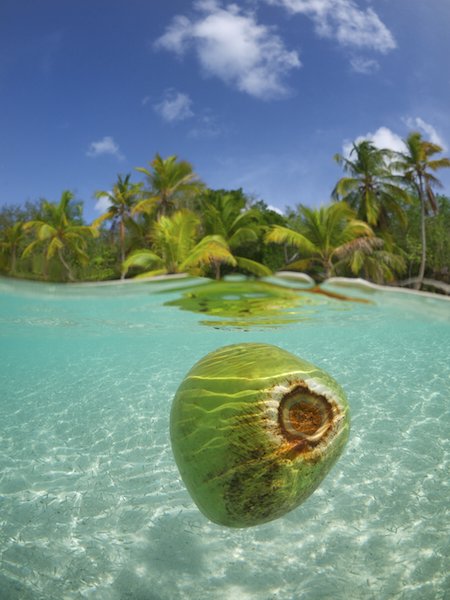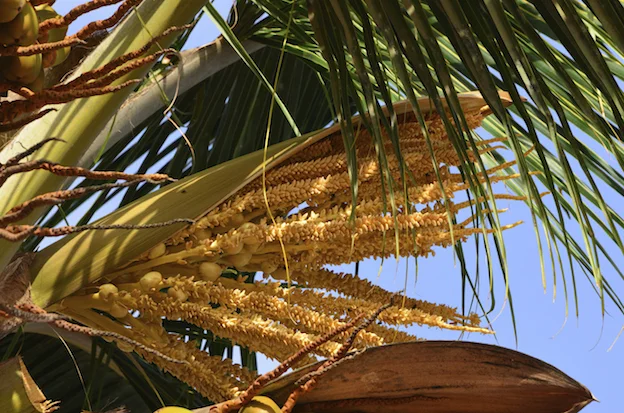Coconuts are the fruit of the coconut tree.
New coconut trees grow from coconuts.
Coconuts drop from the trees and begin to sprout.
The juice and flesh inside the coconut is the food for the new plant.
Where coconuts grow
Coconuts growing on a coconut tree © Getty images
Coconuts grow naturally in over 80 countries.
They are also grown in plantations (farms or orchards) in countries such as the Philippines, Thailand, Indonesia, India and Sri Lanka. The Philippines is the largest producer of coconuts, and Indonesia the second largest.
A coconut plantation (farm) in Thailand. Image©Dreamstime
Coconut trees
A coconut tree grows very tall, lives for about 80 years and produces hundreds of coconuts and thousands of litres of sap in its life. Coconut trees can grow to 30 metres tall, and each leaf grows to about 4-5 metres long.
A coconut floating in the sea towards land where it might grow. Image©Getty
Not all coconut trees are planted in plantations. Many grow naturally, often along the coastline. When coconuts fall from these trees and into the sea or rivers, they float until they reach land.
A coconut beginning to shoot, the liquid inside is feeding it until the roots are big enough to find water. Image©Dreamstime
If a coconut lands in a suitable spot, it will begin to grow shoots and roots.
The juice inside the coconut feeds the plant until the roots can do their work.
Uses for the coconut
After harvesting, every part of the coconut is used.
The juice inside the coconut is a refreshing drink.
The flesh is grated and dried, or eaten fresh, or used to make coconut milk.
The dried shells, or husks, are used to make kitchen utensils, musical instruments and other objects.
The white flesh inside is called coconut meat.
Coconut oil, or copra oil, is an oil extracted from the kernel or meat of coconuts from the coconut palm. It can be eaten and used in cooking.
Coconuts have a thick, green outer coating called a husk. It is cut away to reach the hard brown nut, and its fibres are called coir and are used to make ropes, sacks, mattress stuffing and doormats.
Coconut milk is put it into curries, sweets, desserts and drinks.
The green fibrous outer layer of the coconut is used as fuel, to make thatched roofs or to stuff mattresses.
A coconut flower ©iStock
Dried coconut meat is called copra. Copra is used to produce oil, which is used in many products, including soap.
Coconut sugar
Sugar is made from the sap of the coconut flower buds. Bamboo tubes are placed to collect the sap that oozes from the buds, about one litre a day. The sap is boiled until crystals form, and poured into moulds to set. The light brown sugar is called palm sugar, and has a delicate flavour.
Coconut syrup
Coconut syrup is made from coconut sap. It is made by boiling coconut sap. The sap is heated to 75-80 degrees to evaporate (boil away) the water content in the coconut sap. Coconut syrup contains 72-75% sugar and is a dark brown colour. The colour, sweetness and flavour of the coconut syrup may vary slightly depending on the coconut species used, the season and where the coconut palm is growing. Coconut syrup can be used as you would use honey, as a sweetener or as a topping for yoghurt. It's delicious!







